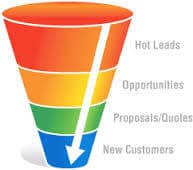Use Web Analytics to Improve Customer Engagement
John M. Haddad
If you have a business website, your site should have the ability to produce comprehensive web analytics. You should have use of analytics tools to track overall traffic.
We find that, more often than not, business owners and managers do not take full advantage of the information contained in analytics reports – or they don’t know how to.
We implement Google Analytics into our site designs. So how should businesses interpret Web analytics data — and leverage that information to decrease bounce and exit rates and increase sales on their website? Here are some thoughts:
See how people are accessing your site (mobile devices vs. laptops or desktops) — and optimize accordingly.
Look at how sales, especially conversion rates, differ by device type. With well over 40% of internet activity being generated from mobile devices, it is critical to understand what type of mobile devices and computers are accessing your website. And if customers are using mobile devices to view your site, make sure the entire site is mobile friendly.
Track where traffic is coming from — to help determine where to invest marketing dollars and time.
 Analytics can give you a great deal of information on how potential customers may have reached your website. Ask yourself, “Is your traffic coming from other websites (referrals), social media or search engines (paid/organic)?” Knowing where traffic comes from can help you understand where to invest more time and money to increase traffic.
Analytics can give you a great deal of information on how potential customers may have reached your website. Ask yourself, “Is your traffic coming from other websites (referrals), social media or search engines (paid/organic)?” Knowing where traffic comes from can help you understand where to invest more time and money to increase traffic.
Discover where visitors are located, so you can better target those areas.
With analytics tools, you can use a geographic filter to figure out which countries, regions or states generate more views and sales than others. You can then use this information to create focused advertising campaigns for specific geographies.”
Use demographics data to better understand and target your audience.
Google Analytics recently released a Demographics and Interests segmentation in the Audience report. This allows sites to see the age, [gender] and interests of their site users – and which segments have a higher conversion rate. Based on this data, you can create better targeting criteria in future display and paid traffic efforts.
Know exactly what your customers are looking for (with Site Search).
Use Site Search data in Google Analytics to find terms people are searching for while they are on your site, along with the page they were visiting at the time. This will help you pinpoint lost opportunities for product placements or key terms that your visitors are searching on.
 Learn where visitors are landing.
Learn where visitors are landing.
Look at your Landing Page metrics, which are the pages where all your website traffic lands from search engines and other referrers. The content (text, images, call-to-action elements, etc.) on these pages should be perfected as to decrease the bounce rate and increase the conversion rate.
Find out which pages are generating the most interest
Are those pages generating the most interest buried deep in your website? If so, find a way to spotlight them on your home page. You can use in-page analytics to learn which calls to action are producing the best results on your Web pages. For example, Google Analytics allows you to view a web page and see which links on that page are driving the most clicks,
In summary, it’s not enough for your small or mid-sized business to simply put a website out and hope that potential clients are visiting. You need to take the time to view analytics regularly to ensure your website is getting the value and conversion rates that you expect. We can help ensure your website has the analytics tools needed to ensure your it is providing value to your business.
View other posts

Share this post
Recent Posts

